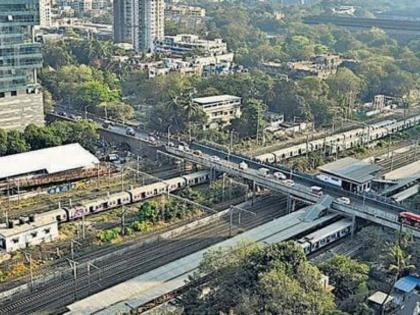Worli-Sewri Connector Hits Roadblock as Elphinstone Chawl Redevelopment Stalls
By Lokmat English Desk | Updated: July 4, 2025 08:46 IST2025-07-04T08:45:17+5:302025-07-04T08:46:49+5:30
With the monsoon in full swing, residents of 19 dilapidated chawls near Elphinstone Bridge in Prabhadevi are living in ...

Worli-Sewri Connector Hits Roadblock as Elphinstone Chawl Redevelopment Stalls
With the monsoon in full swing, residents of 19 dilapidated chawls near Elphinstone Bridge in Prabhadevi are living in fear and uncertainty. These structures are slated for demolition as part of the Worli-Sewri Connector project, but a delayed government order on their cluster redevelopment has left the project—and the people—hanging in limbo. The ₹1,286 crore, 4.5-kilometre-long connector is a major infrastructure project meant to link Worli to the upcoming Atal Setu in Sewri-Nhava Sheva. However, construction has come to a standstill due to issues surrounding the rehabilitation of affected residents. Although the state government approved a cluster redevelopment plan for the 19 chawls three months ago, the Urban Development Department has yet to designate an implementing authority.
Originally, 19 chawls and buildings in the Prabhadevi and Parel areas were to be cleared. But when the rehabilitation costs crossed ₹5,200 crore, the Mumbai Metropolitan Region Development Authority (MMRDA) revised the connector’s alignment. Only two chawls—Laxmi Nivas and Haji Noorani—along with the aging Elphinstone railway bridge were then marked for demolition, to be replaced with a double-decker structure.
Eighty-three families and shopkeepers from the two chawls were moved to transit camps and offered either alternate housing or compensation based on government ready reckoner rates. But many residents—some living in the area for decades—have refused to relocate, citing low compensation compared to the actual market value, which is nearly double.
Local residents have also opposed any relocation, demanding in-situ rehabilitation for all 19 chawls, given that construction activities will impact them all. This led to a high-level meeting chaired by Chief Minister Devendra Fadnavis in April, where it was decided that all 19 chawls would be redeveloped as a single cluster. But the delay in finalizing which agency will handle the redevelopment has brought progress to a halt.
With rains intensifying, residents of these crumbling chawls fear for their safety. Meanwhile, the incomplete connector remains stalled on both ends—at Worli and Sewri—awaiting the green light that could finally move the redevelopment and the infrastructure project forward.
Open in app